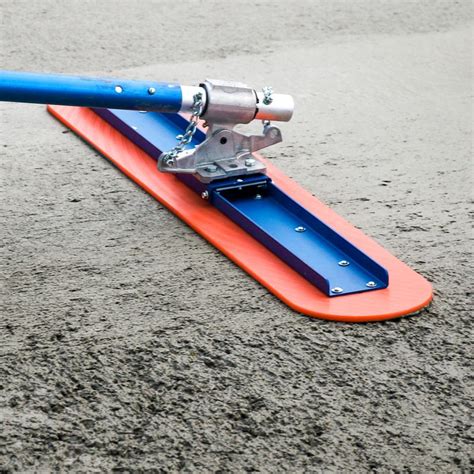Concrete Floats: A Smart Investment for Today's Farmer
For today's farmer, maximizing efficiency and minimizing environmental impact are paramount. Traditional feeding systems often fall short in these areas, leading to feed waste, soil compaction, and increased labor costs. Enter concrete floats – a durable, versatile, and environmentally conscious solution that's revolutionizing livestock feeding practices. This article will delve into the many advantages of concrete floats, addressing common questions and showcasing why they represent a smart investment for modern agriculture.
What are Concrete Floats?
Concrete floats are essentially large, flat concrete structures designed to provide a stable and clean feeding area for livestock. Unlike traditional feeding methods that often lead to uneven distribution and feed waste, concrete floats offer a consistent and accessible feeding surface. Their robust construction ensures longevity, reducing the need for frequent replacements and minimizing long-term costs.
Why Choose Concrete Floats Over Other Feeding Systems?
Several key advantages make concrete floats a superior choice compared to other feeding systems:
-
Reduced Feed Waste: The smooth, flat surface of the concrete float minimizes feed spillage and spoilage, resulting in significant cost savings over time. This is particularly important with expensive feedstuffs.
-
Improved Hygiene: Concrete is easy to clean and disinfect, maintaining a sanitary environment and reducing the risk of disease transmission among livestock. This translates to healthier animals and reduced veterinary costs.
-
Enhanced Animal Welfare: The level feeding surface ensures all animals have equal access to feed, preventing competition and bullying, and promoting overall animal welfare.
-
Reduced Soil Compaction: Unlike traditional feeding systems, concrete floats prevent soil compaction around feeding areas, preserving soil health and reducing the risk of erosion. This is crucial for maintaining long-term land productivity.
-
Durability and Longevity: Concrete is exceptionally durable and resistant to the wear and tear of daily livestock activities. A well-installed concrete float can last for decades, representing a significant long-term cost saving.
-
Easier Cleaning and Maintenance: The smooth, non-porous surface of concrete makes it easy to clean and maintain, reducing labor costs and improving hygiene.
What are the Different Types of Concrete Floats?
Concrete floats come in various sizes and configurations to suit different needs and livestock types. Some common variations include:
-
Self-contained units: These are standalone structures with built-in feed storage and dispensing mechanisms.
-
Modular units: These units can be linked together to create larger feeding areas as needed.
-
Custom designs: Many manufacturers offer custom design options to suit specific farm layouts and livestock requirements.
How Much Does a Concrete Float Cost?
The cost of a concrete float varies depending on size, design, and materials used. It's best to contact multiple concrete suppliers and contractors to get accurate quotes tailored to your specific needs. However, considering their longevity and the long-term cost savings they offer, concrete floats often represent a financially sound investment.
How Do I Maintain a Concrete Float?
Regular cleaning and maintenance are essential to prolong the lifespan of a concrete float. This includes:
-
Regular cleaning: Remove manure and leftover feed regularly to prevent buildup and maintain hygiene.
-
Crack repair: Repair any cracks promptly to prevent further damage and maintain structural integrity.
-
Resealing (if needed): Depending on the concrete mix and environmental conditions, resealing may be necessary to protect the concrete from weathering.
Are Concrete Floats Environmentally Friendly?
Yes, concrete floats contribute to a more sustainable farming practice. The reduced feed waste, improved soil health, and reduced risk of disease all contribute to a lower environmental footprint. The long lifespan of a concrete float also minimizes the need for frequent replacements, reducing material consumption and waste.
What Size Concrete Float Do I Need?
The size of the concrete float you need will depend on the number and type of livestock you are feeding. Consult with a livestock specialist or agricultural engineer to determine the appropriate size for your specific needs.
In conclusion, concrete floats offer a compelling blend of economic efficiency, improved animal welfare, and environmental sustainability. For today's forward-thinking farmer, this investment represents a significant step towards creating a more productive, responsible, and profitable operation. The long-term benefits far outweigh the initial costs, making concrete floats a smart choice for the modern farm.

